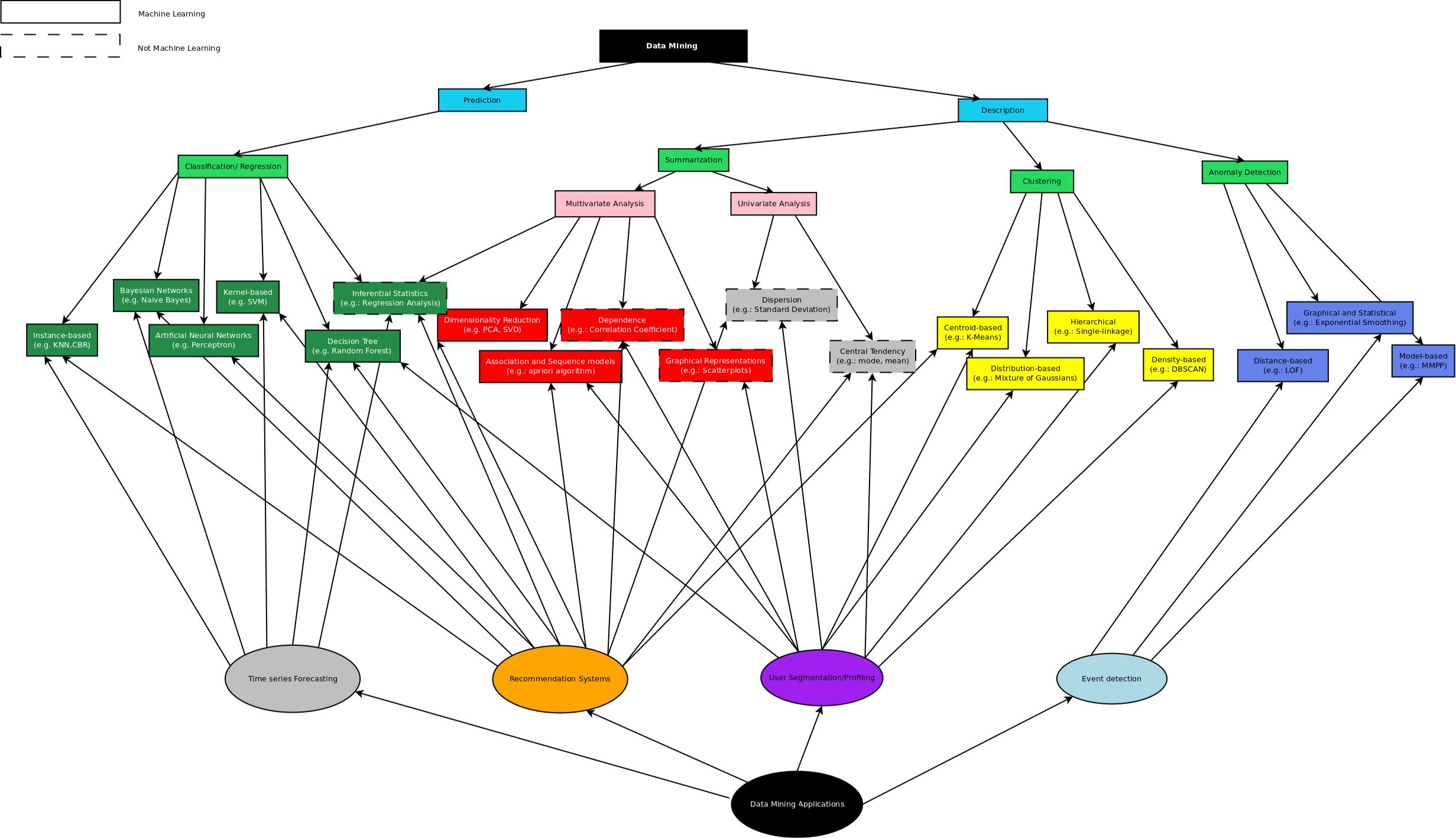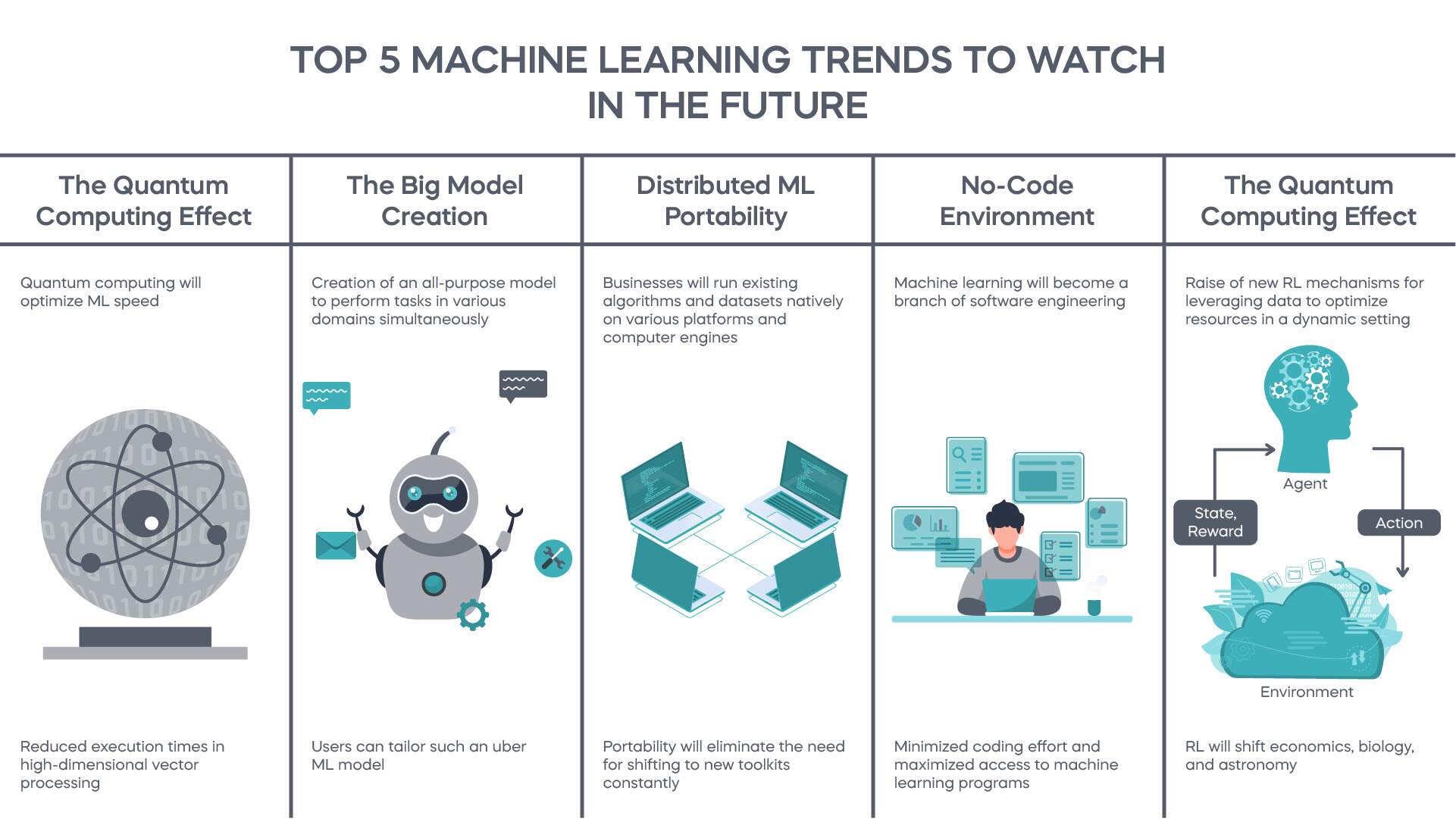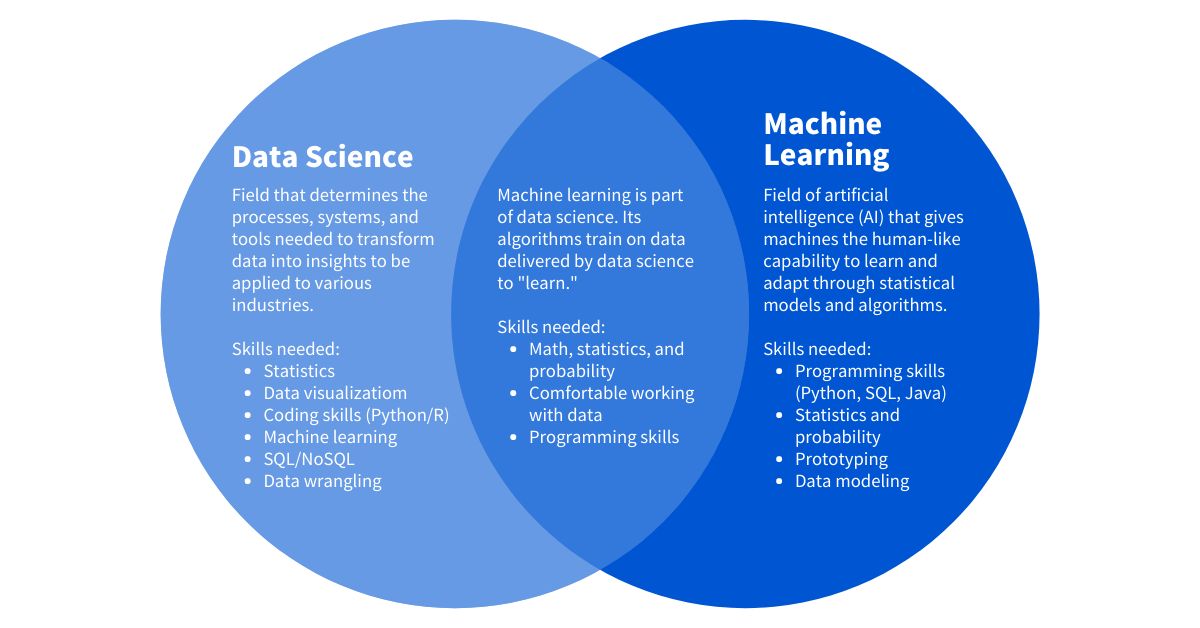The Importance of Machine Learning in Finance
Machine learning plays a crucial role in revolutionizing the financial industry. With its ability to analyze vast amounts of data and uncover patterns and insights, machine learning has become an essential tool for financial institutions. From fraud detection to risk management and trading strategies, machine learning has impacted various aspects of finance and offers numerous benefits. Let’s explore the importance of machine learning in finance:
Fraud Detection
Financial institutions face the ongoing challenge of detecting and preventing fraudulent activities. Machine learning algorithms excel at identifying anomalies and suspicious patterns in transactions, making it easier to flag potential fraud. By analyzing historical data and real-time information, machine learning models can continuously learn and adapt to new fraud patterns, enhancing fraud detection accuracy and reducing financial losses.
Risk Management
Managing risks is a crucial aspect of finance, and machine learning helps improve the accuracy of risk assessment. Machine learning models can analyze historical market data, economic indicators, and company financials to predict potential risks. This allows financial institutions to make data-driven decisions, optimize risk exposure, and improve overall portfolio performance.
Trading Strategies
Machine learning algorithms enable financial institutions to develop and refine trading strategies based on historical data, market trends, and real-time variables. These algorithms can analyze a vast amount of data, identify patterns, and make predictions about future market movements. By leveraging machine learning in trading, decision-making becomes more informed and efficient, potentially leading to better investment outcomes.
Customer Service and Personalization
Machine learning algorithms have the capability to analyze customer data and behavior to provide a personalized experience. By understanding customer preferences and needs, financial institutions can offer tailored recommendations, product suggestions, and personalized communication. This enhances customer satisfaction, loyalty, and ultimately drives business growth.
Credit Scoring
Machine learning models can evaluate various parameters and data points to assess creditworthiness accurately. By analyzing historical credit data, employment information, payment behavior, and other factors, machine learning algorithms can provide more accurate and reliable credit scores. This allows financial institutions to make better lending decisions, minimize default risks, and improve the efficiency of the credit evaluation process.
Predictive Analytics
Machine learning algorithms excel at predictive analytics by analyzing patterns and historical data to make future predictions. In finance, predictive analytics can be utilized to forecast customer behavior, predict market trends, and anticipate changes in economic conditions. This enables financial institutions to make proactive decisions and stay ahead in a highly dynamic and competitive industry.
Algorithmic Trading
Machine learning algorithms have transformed the landscape of algorithmic trading. By analyzing market data, news sentiment, and other variables in real-time, algorithms can make swift and automated trading decisions. This helps financial institutions take advantage of market opportunities, maximize profits, and reduce human error.
Portfolio Management
Machine learning algorithms can assist in portfolio management by optimizing asset allocation and portfolio rebalancing. By analyzing historical data, market performance, and risk tolerance, machine learning models can provide valuable insights and recommendations. This can lead to improved portfolio performance, diversification, and risk management.
Regulatory Compliance
Financial institutions are subject to strict regulatory requirements, and machine learning can aid in achieving compliance. By analyzing large volumes of data, machine learning algorithms can identify patterns and anomalies that may indicate regulatory violations. This helps financial institutions detect and prevent potential compliance breaches, ensuring adherence to laws and regulations.
Financial Forecasting
Machine learning algorithms have the ability to analyze historical data and make accurate financial forecasts. From predicting stock prices to forecasting revenue and growth, machine learning models provide valuable insights for financial planning and decision-making. Financial institutions can utilize these forecasts to develop robust strategies and make informed investment decisions.
Overall, machine learning has become an indispensable tool in the finance industry. Its ability to analyze vast amounts of data, identify patterns, and make predictions has transformed various aspects of finance, ranging from fraud detection to risk management and trading strategies. Financial institutions that leverage machine learning gain a competitive edge, make data-driven decisions, and achieve improved efficiency and accuracy in their processes.
Fraud Detection
Fraud detection is a significant challenge faced by financial institutions, and machine learning has emerged as a powerful tool to combat fraudulent activities. Machine learning algorithms have the ability to analyze large volumes of data, identify patterns, and detect anomalies that may indicate fraudulent behavior.
One of the key advantages of machine learning in fraud detection is its ability to continuously learn and adapt to new fraud patterns. Traditional rule-based systems can only detect fraud based on pre-defined rules, which may not capture the evolving nature of fraudulent activities. Machine learning models, on the other hand, can constantly update their knowledge based on new data, allowing them to recognize new patterns and stay one step ahead of fraudsters.
Machine learning algorithms can analyze various data sources, including transaction data, customer behavior, and historical fraud patterns, to build predictive models. These models can then be used to flag suspicious activities in real-time, enabling financial institutions to take immediate action to prevent potential fraud.
By leveraging machine learning in fraud detection, financial institutions can not only improve their detection accuracy but also reduce false positives. Traditional systems often generate a high number of false positives, resulting in unnecessary investigations and inconveniences for customers. Machine learning models can help minimize false positives by learning from historical data and identifying legitimate patterns of behavior.
Furthermore, machine learning algorithms can detect fraud across different channels and touchpoints, including online transactions, credit card usage, and account access. They can detect patterns that may be indicative of account takeover, identity theft, or unauthorized transactions.
Machine learning can also be used to build models that detect insider fraud within organizations. By analyzing employee data, access logs, and communication patterns, machine learning algorithms can identify anomalous behavior that might indicate fraudulent activities by employees or insiders.
Overall, machine learning has revolutionized fraud detection in the financial industry. Its ability to analyze vast amounts of data, detect patterns, and adapt to new fraud behaviors makes it an invaluable tool for financial institutions in their ongoing battle against fraudsters.
Risk Management
Risk management is a critical aspect of the finance industry, and machine learning is playing a crucial role in improving risk assessment and mitigation strategies. Machine learning algorithms have the capability to analyze vast volumes of historical market data, economic indicators, and company financials to identify potential risks and make data-driven decisions.
One of the key benefits of using machine learning in risk management is its ability to provide more accurate and timely risk assessments. Traditional risk models often rely on manual processes and subjective judgments, which can be time-consuming and prone to biases. Machine learning models, on the other hand, can process large sets of data quickly and objectively, allowing for more thorough risk evaluations.
Machine learning algorithms can analyze patterns and trends from historical data to identify potential risks. By considering a range of variables and their interdependencies, machine learning models can provide a more comprehensive and accurate picture of risk exposure. This enables financial institutions to make informed decisions about risk tolerance levels and optimize their portfolio performance.
Furthermore, machine learning can help financial institutions identify emerging risks that may not be captured by traditional risk models. By continuously monitoring market conditions and analyzing real-time data, machine learning algorithms can detect early warning signs of potential risks, allowing for proactive risk management.
Machine learning can also improve the efficiency of risk management processes. By automating routine tasks such as data collection, cleaning, and analysis, machine learning algorithms free up time for risk managers to focus on more strategic activities. This enables financial institutions to respond to risks more effectively and allocate resources efficiently.
In addition to identifying risks, machine learning algorithms can assist in devising risk mitigation strategies. By analyzing historical data and identifying successful risk mitigation techniques, machine learning models can generate insights and recommendations for risk management practices. This can help financial institutions develop robust risk management frameworks and optimize their risk mitigation strategies.
Overall, machine learning is transforming risk management in the finance industry by enhancing risk assessment accuracy, enabling early detection of emerging risks, and providing data-driven insights for risk mitigation strategies. By leveraging machine learning, financial institutions can make informed decisions, optimize portfolio performance, and effectively navigate an increasingly complex and volatile marketplace.
Trading Strategies
Machine learning algorithms have revolutionized the development and execution of trading strategies in the financial industry. By analyzing vast amounts of historical data and real-time market information, machine learning models can identify patterns, make predictions, and generate insights that can inform trading decisions.
One of the key advantages of using machine learning in trading is its ability to process and analyze large volumes of data quickly and efficiently. Traditional trading strategies often relied on manual analysis and subjective interpretations of market data, which could be time-consuming and prone to human biases. Machine learning algorithms, on the other hand, can analyze numerous data points simultaneously and make data-driven decisions based on statistical patterns.
Machine learning algorithms can identify hidden patterns and trends in market data that may not be apparent to human traders. By analyzing historical price data, market indicators, news sentiment, and other variables, machine learning models can identify signals and patterns that may indicate potential trading opportunities or market inefficiencies.
Machine learning can also assist in developing and refining trading strategies. By simulating various strategies and backtesting them on historical data, machine learning models can evaluate their performance and optimize parameters to maximize returns and minimize risks. This iterative process allows traders to fine-tune their strategies based on data-driven insights and improve their trading outcomes.
Furthermore, machine learning can enable automated trading systems, also known as algorithmic trading. By integrating machine learning algorithms with trading platforms, financial institutions can execute trades automatically based on predefined criteria and market conditions. This reduces the reliance on human intervention and emotions, while improving the speed and accuracy of trade execution.
Machine learning algorithms can also adapt to changing market conditions and adjust trading strategies accordingly. By continuously analyzing real-time market data, machine learning models can detect shifts in market dynamics and update trading strategies in response. This adaptability allows traders to stay agile and responsive in a rapidly changing market.
Overall, machine learning has transformed the development and execution of trading strategies in the finance industry. By leveraging its ability to analyze vast amounts of data, identify patterns, and adapt to market conditions, machine learning enables traders to make data-driven decisions, optimize trading strategies, and potentially improve trading outcomes.
Customer Service and Personalization
Machine learning algorithms have had a profound impact on customer service and personalization in the finance industry. By analyzing customer data, behavior, and preferences, machine learning enables financial institutions to provide personalized experiences and enhance customer satisfaction.
One of the key advantages of using machine learning in customer service is its ability to analyze vast amounts of data to gain insights into customer preferences and needs. By leveraging machine learning algorithms, financial institutions can identify patterns in customer behavior, such as transaction history, browsing patterns, and interactions with customer service representatives. This allows them to anticipate customer needs and provide proactive assistance.
Machine learning algorithms enable financial institutions to offer personalized recommendations and suggestions to customers. By analyzing customer data, such as previous transactions and browsing history, machine learning models can generate personalized product recommendations and relevant offers. This level of personalization enhances the customer experience, increases engagement, and drives customer loyalty.
Furthermore, machine learning can improve the efficiency of customer service operations. By automating routine customer queries and tasks, such as balance inquiries or account updates, machine learning algorithms free up customer service representatives’ time to focus on more complex and high-value interactions. This results in faster response times, reduced wait times, and improved overall customer service experience.
Chatbots powered by machine learning are becoming increasingly popular in the finance industry. These chatbots can engage in natural language conversations with customers, provide instant support, and answer common queries. Machine learning models behind chatbots continuously learn from customer interactions, improving their accuracy and ability to address customer queries effectively.
Machine learning also enables sentiment analysis, which can help financial institutions gauge customer satisfaction and identify potential issues or concerns. By analyzing customer feedback, social media sentiment, and other textual data, machine learning algorithms can detect patterns and sentiments, allowing financial institutions to take proactive measures to address customer concerns and improve customer satisfaction.
Overall, machine learning has transformed customer service and personalization in the finance industry. By leveraging its ability to analyze customer data, provide personalized recommendations, and automate customer interactions, financial institutions can create a more seamless and personalized experience for their customers. This not only improves customer satisfaction but also supports customer retention and drives business growth.
Credit Scoring
Credit scoring is a vital aspect of the finance industry, and machine learning has significantly improved the accuracy and efficiency of this process. Machine learning algorithms have the ability to analyze vast amounts of data and evaluate various parameters to assess creditworthiness accurately.
Traditional credit scoring models often relied on a limited set of variables, such as credit history, income, and employment. However, machine learning models can go beyond these traditional factors and consider additional variables that can impact creditworthiness. By analyzing a wide range of data, including transaction history, social media behavior, and other alternative data sources, machine learning algorithms can provide a more comprehensive and accurate credit assessment.
One of the key benefits of using machine learning in credit scoring is its ability to identify complex patterns and relationships in the data. Machine learning algorithms can uncover non-linear relationships and interactions among variables that may not be apparent through traditional scoring models. This enables financial institutions to make more accurate predictions about creditworthiness and reduce the risk of default.
Machine learning models can continuously learn and adapt to changing credit patterns and behaviors. By regularly updating their knowledge based on new data, these models can stay up to date with the latest trends and adjustments in credit risk. This adaptability ensures that credit scoring models remain relevant and reliable in a dynamic financial landscape.
Furthermore, machine learning algorithms can identify early warning signs of potential default. By analyzing patterns of past defaults and identifying common indicators, machine learning models can flag potential high-risk borrowers. This early identification allows financial institutions to take proactive measures, such as adjusting credit limits or offering alternative financial solutions, to mitigate risks and reduce potential losses.
Machine learning also improves the efficiency of the credit evaluation process. Traditional credit scoring models often involve manual data entry and time-consuming processes. However, machine learning algorithms automate data collection, cleaning, and analysis, reducing the time and effort required for credit assessment. This enables financial institutions to process credit applications faster and provide timely decisions to customers.
Overall, machine learning has transformed the credit scoring process by improving accuracy, considering a wider range of variables, and enhancing efficiency. By leveraging its ability to analyze vast amounts of data and identify complex patterns, machine learning enables financial institutions to make more informed and reliable credit decisions, reducing risks and improving the overall credit evaluation process.
Predictive Analytics
Predictive analytics utilizing machine learning algorithms has become an indispensable tool in the finance industry. By analyzing historical data and identifying patterns, machine learning models can make predictions about future outcomes, enabling financial institutions to make proactive and informed decisions.
One of the key advantages of using predictive analytics in finance is its ability to forecast customer behavior. By analyzing customer data, transaction history, and browsing patterns, machine learning algorithms can predict future customer preferences, purchase decisions, and churn likelihood. These insights allow financial institutions to tailor their marketing strategies, offer personalized recommendations, and engage with customers more effectively.
Another significant application of predictive analytics in finance is in predicting market trends and conditions. Machine learning models can analyze historical market data, economic indicators, and news sentiment to identify patterns and make predictions about future market movements. By leveraging these predictions, financial institutions can make data-driven investment decisions and adjust their strategies accordingly.
Predictive analytics can also be employed to forecast financial performance and optimize resource allocation. Machine learning algorithms can analyze historical financial data, industry trends, and macroeconomic factors to predict future revenue, cash flows, and profitability. This enables financial institutions to make strategic decisions, allocate resources efficiently, and plan for potential risks and opportunities.
Furthermore, machine learning algorithms can aid in fraud detection by identifying unusual patterns and anomalies in real-time data. By analyzing transaction data, user behavior, and historical fraud patterns, machine learning models can flag potential fraudulent activities, enabling financial institutions to take immediate actions to prevent financial losses.
Machine learning algorithms can also assist in credit risk assessment by predicting the likelihood of default. By analyzing historical credit data, employment information, and other variables, machine learning models can provide more accurate credit risk scores. This enables financial institutions to make better-informed lending decisions, minimize default risks, and improve the efficiency of the credit evaluation process.
Overall, predictive analytics powered by machine learning has transformed the finance industry by providing valuable insights into customer behavior, market trends, financial performance, and risk assessments. By leveraging these insights, financial institutions can make proactive decisions, optimize their strategies, and gain a competitive advantage in a rapidly evolving landscape.
Algorithmic Trading
Algorithmic trading, powered by machine learning algorithms, has revolutionized the way financial institutions execute trades. By leveraging sophisticated algorithms, financial institutions can automate trading decisions and take advantage of market opportunities more efficiently.
One of the key advantages of algorithmic trading is the ability to process vast amounts of market data in real-time. Machine learning algorithms can analyze market trends, news sentiment, historical price data, and other variables to identify patterns and make data-driven trading decisions. This enables financial institutions to execute trades swiftly and take advantage of market inefficiencies.
Machine learning algorithms excel at capturing complex market dynamics and identifying hidden patterns that may not be apparent to human traders. By considering a wide range of factors and their interdependencies, these algorithms can make more informed trading decisions, mitigating risks and maximizing returns.
Algorithmic trading reduces the reliance on human emotions and biases. Machine learning models can make objective and rational decisions based on predefined criteria and market conditions, reducing the influence of human emotions such as fear or greed. This improves the consistency and discipline of trading strategies.
Machine learning algorithms continuously adapt to changing market conditions. By analyzing real-time market data and adjusting trading strategies accordingly, algorithmic trading systems can stay agile and responsive. This adaptability allows financial institutions to take advantage of new market opportunities and mitigate potential risks more effectively.
Moreover, algorithmic trading can execute trades at a much faster pace compared to manual trading. With algorithmic systems, trades can be executed within milliseconds, reducing the impact of price fluctuations and improving the efficiency of trade execution. This is particularly beneficial for high-frequency trading strategies.
Machine learning algorithms can also optimize trade execution by minimizing transaction costs. These algorithms can consider factors like trading volumes, liquidity conditions, and market impact to execute trades at optimal prices. This optimization helps financial institutions maximize trading profits and reduce expenses.
Overall, algorithmic trading powered by machine learning algorithms brings increased efficiency, objectivity, and speed to the trading process. By leveraging data-driven insights, financial institutions can optimize trading strategies, mitigate risks, and improve overall trading performance.
Portfolio Management
Portfolio management is a critical function in the finance industry, and machine learning algorithms have significantly enhanced the efficiency and effectiveness of managing investment portfolios. By leveraging machine learning, financial institutions can optimize asset allocation, rebalancing strategies, and risk management within their portfolios.
One of the key advantages of using machine learning in portfolio management is its ability to analyze vast amounts of data and identify patterns. Machine learning algorithms can analyze historical market data, economic indicators, company financials, and other relevant variables to identify relationships, correlations, and market trends. This enables portfolio managers to make data-driven decisions based on the insights provided by these algorithms.
Based on historical data and market trends, machine learning algorithms can help optimize asset allocation within a portfolio. By considering the risk-return profile of different assets and their correlations, these algorithms can recommend optimal asset weightings to maximize portfolio performance and minimize risk.
Machine learning algorithms can also aid in portfolio rebalancing. By monitoring market conditions and analyzing portfolio performance, these algorithms can provide insights on when and how to rebalance the portfolio to maintain the desired asset allocation. This helps ensure that the portfolio remains aligned with the investment objectives and risk preferences of the investor.
Risk management is a crucial aspect of portfolio management, and machine learning can assist in assessing and mitigating risks. Machine learning algorithms can analyze historical data, market indicators, and other risk factors to predict potential risks and assess their impact on the portfolio. This enables portfolio managers to proactively manage risks and adjust strategies accordingly.
Another area where machine learning can contribute to portfolio management is in identifying opportunities for diversification. By analyzing correlations and relationships among different assets, machine learning algorithms can suggest potential assets to include in a portfolio to enhance diversification and reduce concentration risks.
Furthermore, machine learning can assist in the identification of potential outliers or anomalies that may indicate mispriced assets or emerging risks. By continuously monitoring data and analyzing patterns, machine learning algorithms can provide alerts or recommendations to portfolio managers, allowing them to take timely actions.
In addition, machine learning algorithms can adapt to changing market conditions and adjust portfolio management strategies accordingly. By continuously analyzing real-time market data and updating their knowledge, these algorithms can enable dynamic and flexible decision-making in response to market shifts.
Overall, machine learning has transformed the field of portfolio management, empowering financial institutions to optimize asset allocation, rebalance portfolios, manage risks, diversify investments, and make data-driven decisions. By leveraging the power of machine learning, financial institutions can achieve improved portfolio performance, increased efficiency, and more effective risk management.
Regulatory Compliance
Regulatory compliance is a crucial aspect of the finance industry, and machine learning algorithms are increasingly being utilized to achieve and maintain compliance with regulatory requirements. By leveraging machine learning, financial institutions can automate compliance processes, detect potential violations, and ensure adherence to relevant laws and regulations.
One of the key benefits of using machine learning in regulatory compliance is the ability to analyze large volumes of data efficiently. Financial institutions generate and store vast amounts of data, including transaction records, customer information, and legal documentation. Machine learning algorithms can process and analyze this data to identify patterns, anomalies, and non-compliant activities.
Machine learning algorithms can be trained to recognize patterns that may indicate potential regulatory violations. By analyzing historical data and incorporating regulatory requirements, these algorithms can flag suspicious activities that may require further investigation. This helps financial institutions to proactively identify and respond to potential compliance breaches.
Automating compliance processes using machine learning algorithms can significantly improve efficiency and accuracy. Manual compliance checks can be time-consuming and prone to human error. Machine learning algorithms can automate routine tasks, such as data collection, data validation, and risk assessment, freeing up human resources to focus on more complex compliance activities.
Machine learning can also assist in anti-money laundering (AML) efforts by identifying potential money laundering patterns. By analyzing customer transaction data, behavior patterns, and other relevant variables, machine learning algorithms can detect suspicious patterns that may indicate money laundering activities. This helps financial institutions meet their AML obligations and prevents illicit activities.
Furthermore, machine learning algorithms can adapt to evolving regulations and changes in compliance requirements. By continuously learning and updating their knowledge based on new regulatory guidelines, these algorithms can ensure that financial institutions remain compliant and up to date.
Machine learning algorithms can also help streamline the reporting process. By automating data collection and consolidation, these algorithms can generate accurate and timely reports required by regulatory authorities. This reduces manual errors and ensures that financial institutions meet their reporting obligations.
Overall, machine learning has transformed regulatory compliance in the finance industry by automating processes, detecting potential violations, and ensuring adherence to regulatory requirements. By leveraging the power of machine learning, financial institutions can achieve improved efficiency, accuracy, and transparency in their compliance efforts, thereby mitigating risks and maintaining trust with regulators and stakeholders.
Financial Forecasting
Financial forecasting is a critical aspect of financial planning and decision-making, and machine learning algorithms have revolutionized the accuracy and effectiveness of this process. By leveraging historical data, market trends, and predictive analytics, machine learning enables financial institutions to make informed forecasts about future financial performance.
One of the key advantages of using machine learning in financial forecasting is its ability to analyze vast amounts of data and identify relevant patterns. By analyzing historical financial data, economic indicators, market trends, and other variables, machine learning algorithms can identify patterns and relationships that can be used to forecast future financial outcomes.
Machine learning algorithms can analyze time series data to identify seasonality, trends, and other patterns. By understanding these patterns, financial institutions can make more accurate forecasts about revenue, sales, expenses, and other financial metrics. This enables better financial planning and decision-making.
Predictive analytics using machine learning can assist in forecasting market conditions. By analyzing historical market data, economic indicators, and other relevant variables, machine learning models can make predictions about future market trends, interest rates, inflation, and other factors that may impact financial performance. This helps financial institutions anticipate potential risks and opportunities.
Machine learning algorithms can also assist in predicting stock prices and asset returns. By analyzing historical price data, market trends, news sentiment, and other variables, machine learning models can generate predictions about future stock prices and identify potential investment opportunities. This supports investment decision-making and portfolio management strategies.
Furthermore, machine learning can assist in financial risk assessment and prediction. By analyzing data related to credit risk, market risk, liquidity risk, and other relevant risk factors, machine learning algorithms can assess the likelihood of potential risks and their potential impact on financial performance. This enables financial institutions to implement risk mitigation strategies and plan for potential contingencies.
Machine learning algorithms can also assist in cash flow forecasting by analyzing historical cash flow data and identifying cash flow patterns. This helps financial institutions manage liquidity, optimize working capital, and make informed financing decisions.
Additionally, machine learning can aid in predicting customer behavior and preferences. By analyzing customer data, transaction history, and other relevant variables, machine learning algorithms can forecast customer demand, churn likelihood, and lifetime value. This enables financial institutions to tailor their marketing strategies, optimize customer acquisition and retention, and align their products and services with customer needs.
Overall, machine learning has transformed financial forecasting in the finance industry by providing more accurate, data-driven, and timely forecasts. By leveraging machine learning algorithms, financial institutions can make informed decisions, proactively manage risks and opportunities, and achieve better financial planning outcomes.
Conclusion
Machine learning has become an integral part of the finance industry, revolutionizing various aspects of financial services. From fraud detection to risk management, trading strategies, customer service, credit scoring, predictive analytics, algorithmic trading, portfolio management, regulatory compliance, and financial forecasting, machine learning algorithms have significantly enhanced efficiency, accuracy, and decision-making in the finance sector.
Fraud detection powered by machine learning algorithms enables financial institutions to proactively identify and prevent fraudulent activities. By analyzing vast amounts of data and detecting anomalies and patterns, machine learning models enhance fraud detection accuracy and reduce financial losses.
Risk management is another crucial area where machine learning plays a vital role. Machine learning algorithms optimize risk assessment, identify potential risks and emerging threats, and improve overall portfolio performance. This empowers financial institutions to make data-driven decisions and effectively manage risks.
Machine learning algorithms also assist in developing and implementing trading strategies. By analyzing historical and real-time market data, these algorithms identify patterns and signals, enabling financial institutions to execute trades more efficiently and potentially maximize returns.
Customer service and personalization have greatly improved with the help of machine learning. By analyzing customer data and behavior, machine learning algorithms offer personalized recommendations, enhance customer experiences, and drive customer satisfaction and loyalty.
Credit scoring benefits from the accuracy and depth of analysis provided by machine learning. These algorithms consider multiple variables and data sources to provide more accurate credit assessments, improving lending decisions and minimizing default risks.
Predictive analytics powered by machine learning enables financial institutions to forecast customer behavior, market trends, and financial performance. This aids in strategic decision-making, risk mitigation, and optimization of resources and investments.
Algorithmic trading allows financial institutions to execute trades based on predefined criteria and market conditions, reducing human error and increasing efficiency. Machine learning algorithms continuously learn and adapt to market shifts, enabling quick adjustments and optimized trading strategies.
Portfolio management benefits from machine learning algorithms that optimize asset allocation, rebalancing, and risk management. By leveraging data-driven insights, financial institutions improve portfolio performance and make informed decisions.
Machine learning aids financial institutions in achieving regulatory compliance by automating processes, detecting potential violations, and ensuring adherence to laws and regulations. This mitigates risks and maintains trust with regulators and stakeholders.
Financial forecasting has greatly improved with the help of machine learning algorithms. By analyzing historical data, market trends, and predictive analytics, financial institutions can make accurate predictions about future financial performance, enhancing financial planning and decision-making.
In conclusion, machine learning has transformed the finance industry by providing advanced analytics, automation, and data-driven decision-making capabilities. Financial institutions that leverage the power of machine learning gain a competitive edge, improve efficiency, enhance customer experiences, mitigate risks, and maximize financial outcomes. As technology continues to evolve, machine learning will continue to play a pivotal role in shaping the future of finance.

























